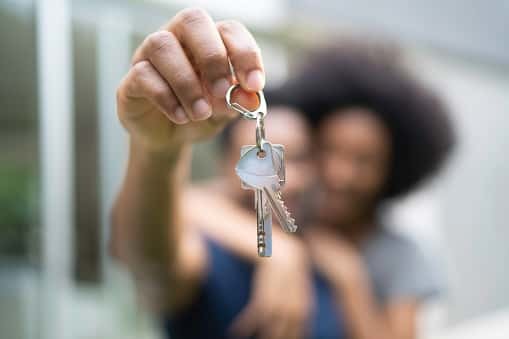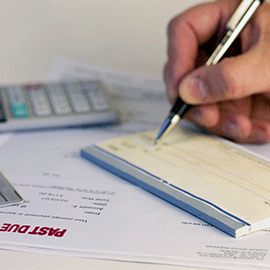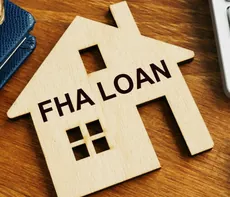What is a 1031 exchange?
Use this strategy to avoid capital gains as a real estate investor

If you’re a real estate investor, you know that real estate comes with some unique tax advantages. One of the most beneficial tax strategies is using a 1031 exchange to avoid paying capital gains taxes on the sale of an investment property.
There are several types of 1031 exchanges available to investors and also some very strict requirements that must be met in order to avoid paying taxes on the sale.
We’ll break down the details of a 1031 exchange: how it works, what types of properties are eligible, how to qualify and who benefits the most from using this process. And we’ll detail what types of properties do not qualify for a 1031 exchange.
Key insights
- 1031 exchange refers to IRS tax code section 1031, which details how to do a “like-kind” exchange of an investment property.
- 1031 exchanges avoid capital gains taxes by trading one property for another.
- You must not take custody of the sale proceeds of the original property to qualify for 1031 exchange tax treatment.
- 1031 exchanges require the use of a qualified intermediary to facilitate the transaction.
How does a 1031 exchange work?
A 1031 exchange, also known as a “like-kind” exchange, is a real estate investment strategy that includes selling an investment property and purchasing a similar property within 180 days to postpone paying capital gains taxes. Section 1031 of the Internal Revenue Code allows investors to defer any gain or loss on a property, which can help postpone unwanted capital gains taxes until a later date.
This allows real estate investors to sell an unwanted property and purchase another while avoiding a large tax bill, allowing them to keep their capital invested in the market for longer.
» MORE: Investment and rental property mortgage rates: 2023 guide
Types of properties eligible for a 1031 exchange
Only certain types of properties are eligible for 1031 exchange tax treatment.
“Personal-use properties, such as primary residences or vacation homes, do not qualify for a 1031 exchange,” said Michael Morris, a commercial real estate agent and founder of Pursuit of Passive Income, a personal finance website. “The exchange is specifically designed for investment or business properties.”
According to Morris, under existing IRS regulations, properties eligible for a 1031 Exchange include (but are not limited to):
- Commercial real estate assets including office, retail and warehouse properties
- Rental properties to include single-family homes or apartments (as long as they are held for investment purposes)
- Vacant land
- Agricultural property (such as farms and ranches)
- Mixed-use assets having any combination of retail, office and residential
It’s important to note that both properties in the 1031 exchange have to be of “like-kind property,” meaning “property of the same nature, character or class,” according to the IRS.
This means that the property you sell must be similar to the property you purchase as part of the exchange. For example, If you sell an apartment building, you must purchase another apartment building, and not a single-family home.
How to do a 1031 exchange: step by step
Here are the steps required to perform a 1031 exchange.
Find a qualified intermediary
Instead, work with an intermediary that can help with the documentation and details of the transaction, as well as hold the funds from your sale in escrow until the new property is purchased. This keeps your transaction fully qualified in the eyes of the IRS and helps you avoid any mistakes in handling the funds or reporting requirements.
Choose the property you want to sell
Choose the property you want to buy (within 45 days)
Purchase the new property (within 180 days)
File your 1031 exchange with the IRS
Advantages of a 1031 exchange
A 1031 exchange is a great investment tool for real estate investors. Here are a few advantages:
- Defer taxes. A 1031 exchange can be a great way to save money on capital gains taxes and stay invested in the real estate market while upgrading your investment property.
- Trade up. Using a 1031 exchange makes it easier to trade one investment property for another, thereby improving your property portfolio and (ideally) making you more money as an investor. Avoiding a large tax bill can help you stay invested in the market and grow your wealth faster.
- Build your wealth. Using a 1031 exchange can help you keep more cash, allowing you to invest in more properties without paying additional taxes. This strategy allows you to keep reinvesting your profits into the real estate market, growing your wealth and potentially helping you retire sooner.
Risks of a 1031 exchange
While 1031 exchanges offer some tax advantages, they aren’t without a few downsides. Morris shared a few risks of utilizing a 1031 exchange:
- Loss of depreciation benefit. “In a 1031 exchange, the tax basis of the relinquished property carries over to the replacement property. As a result, the depreciation schedule for the new property will be based on the original purchase price. If the replacement property is acquired at a higher value than the relinquished property, this can result in a lower annual depreciation deduction.”
- Changing investment objectives. “If you wish to diversify your investment portfolio or switch to a different type of property, a 1031 exchange might not align with your new investment objectives. For example, if you want to transition from residential rental properties to commercial real estate, it may be more beneficial to sell the existing properties and invest directly in the desired asset class rather than using a 1031 exchange.”
- Cash flow considerations. “In some cases, the equity tied up in the relinquished property might be better utilized elsewhere, such as paying off debt, funding other investments, or addressing personal financial needs.”
- Time and complexity constraints. “Completing a 1031 exchange involves adhering to specific timelines, documentation requirements and working with a qualified intermediary. If you have time constraints, urgency in utilizing funds or prefer simplicity in your transactions, a 1031 exchange may not be the most suitable option.”
FAQ
Can I use a 1031 exchange for multiple properties?
Morris has experience here and said, “Yes, it is possible to use a 1031 exchange for multiple properties. The IRS allows taxpayers to exchange one relinquished property for multiple replacement properties, or vice versa, as long as certain rules are followed.”
Sellers must identify, within 45 days, replacement properties whose aggregate value is under 200% of the value of the relinquished property. If the value of multiple properties is over the 200% mark, they must close on at least 95% of the fair market value of the properties identified.
When should you not do a 1031 exchange?
You cannot use a 1031 exchange on personal property, including your primary residence, second home or a vacation home. And while a 1031 exchange can be a good idea for exchanging one rental property for another, it ties up all the home equity you’ve built in the sold property, which you may want to use elsewhere.
Do I need to hire a tax professional or attorney to assist with a 1031 exchange?
While hiring a tax professional or attorney is not a requirement for performing a 1031 exchange, it is a very good idea. Having a professional in your corner to look over the legal paperwork or tax implications can help you avoid mistakes and optimize the transaction for your financial situation.
Bottom line
The 1031 exchange is a powerful investing tool used by real estate investors to defer taxes when selling a property and can be used to help bolster their real estate portfolio. But you need to follow the IRS-prescribed requirements to avoid disqualifying the exchange and getting hit with an unwanted tax bill.
“It is important to evaluate your unique circumstances and financial goals, and consult with a qualified tax professional or financial advisor before deciding if a 1031 exchange is the right choice for your specific situation,” said Morris.
Article sources
- IRS, “ Like-Kind Exchanges Under IRC Section 1031 .” Accessed June 27, 2023.
- GovInfo, “ Common Nontaxable Exchanges - § 1.1031(k)–1 Treatment of deferred exchanges .” Accessed June 27, 2023.






